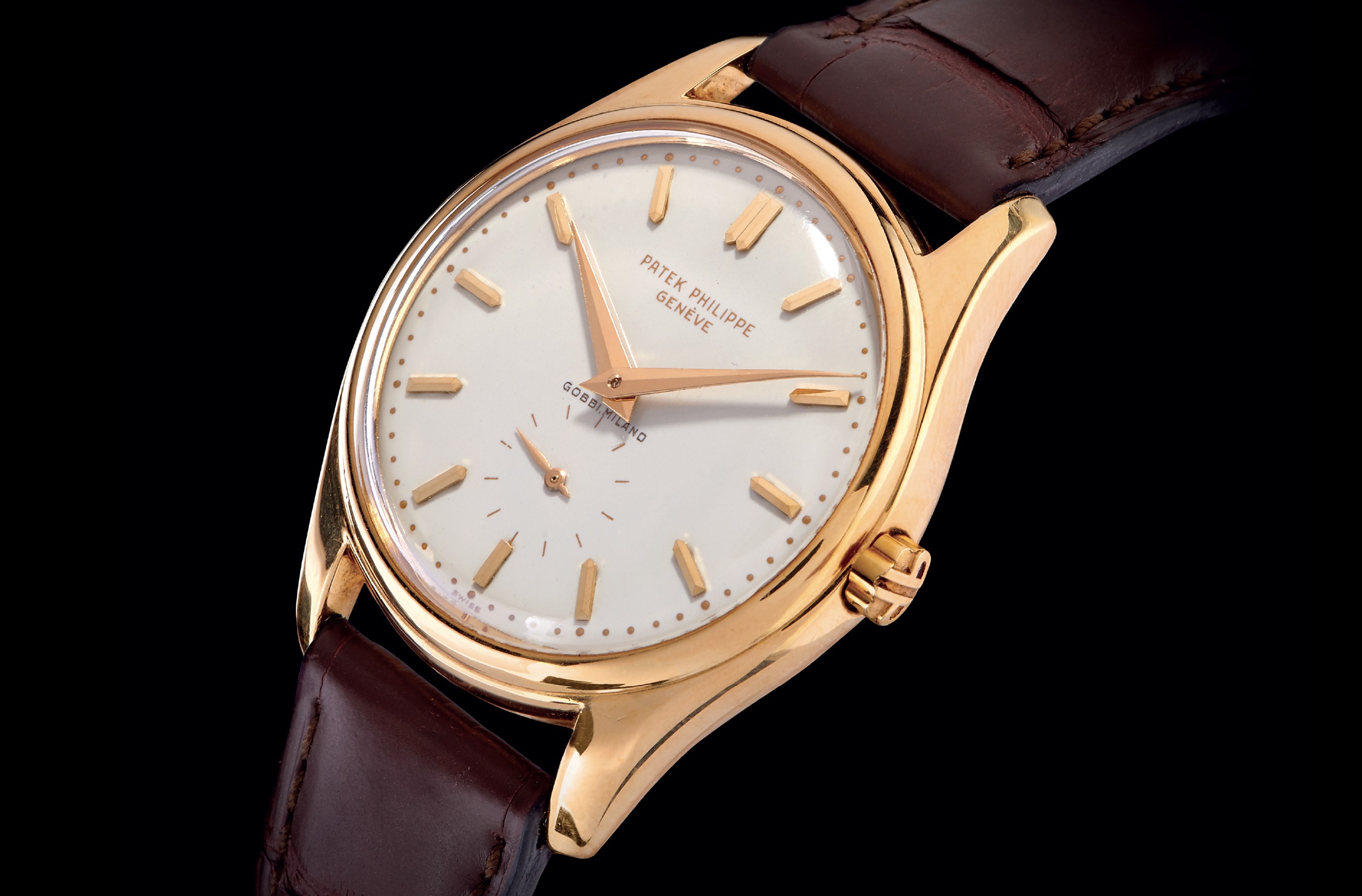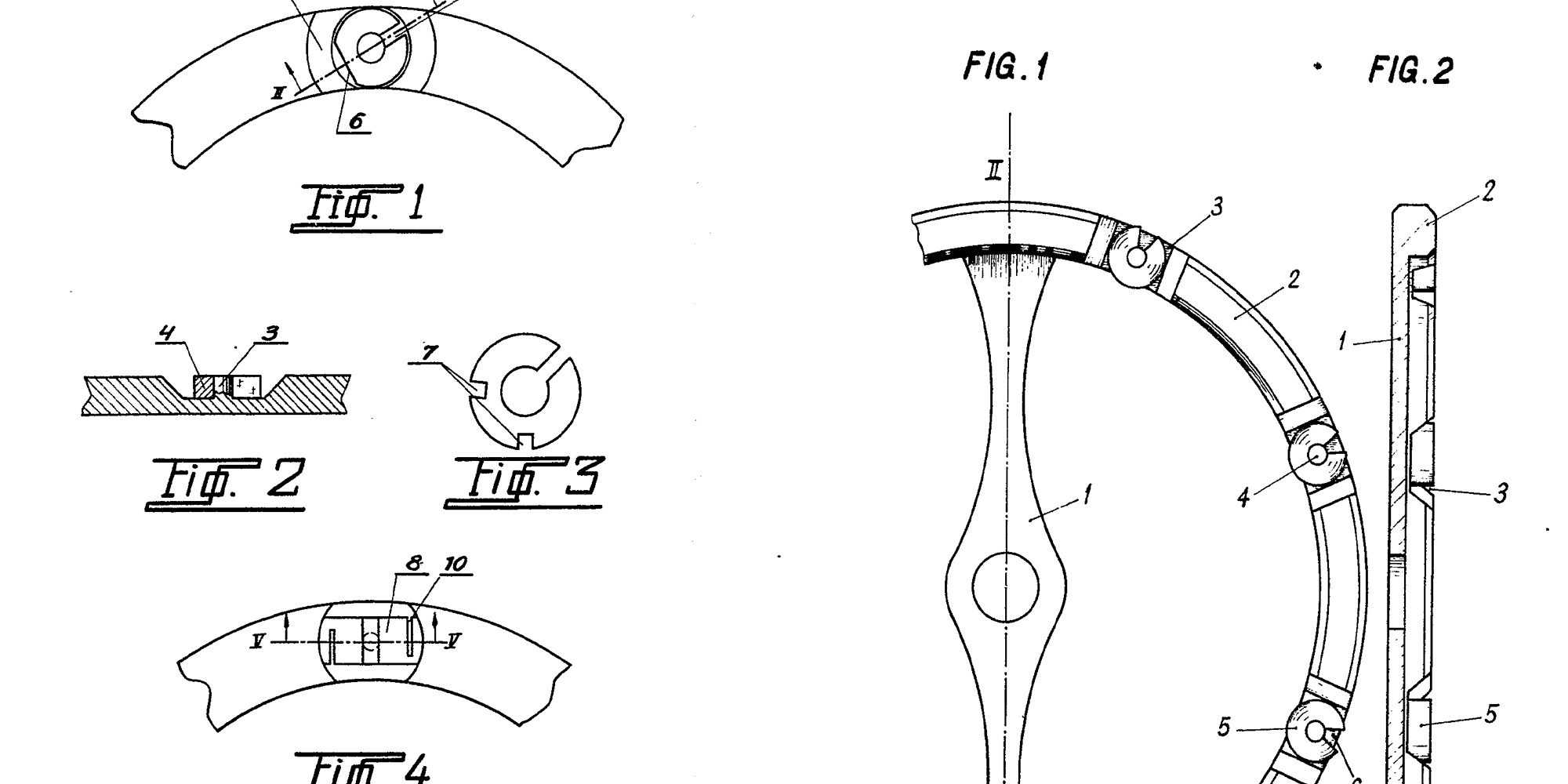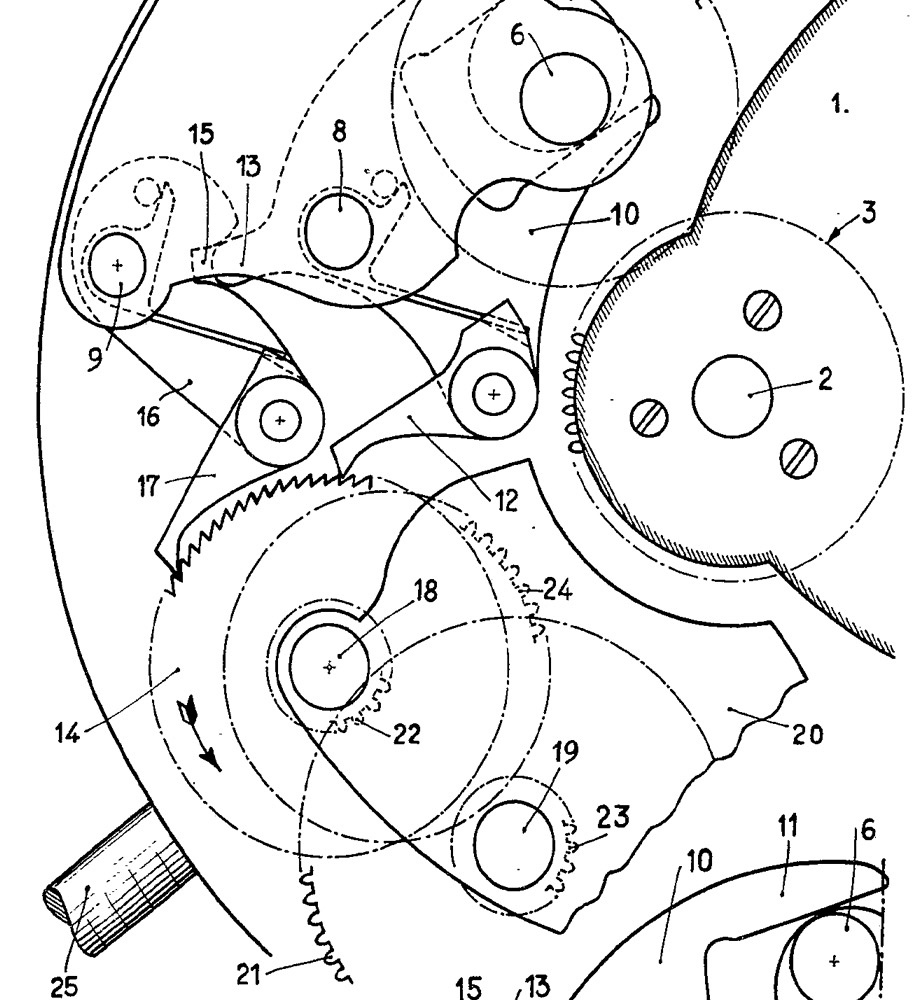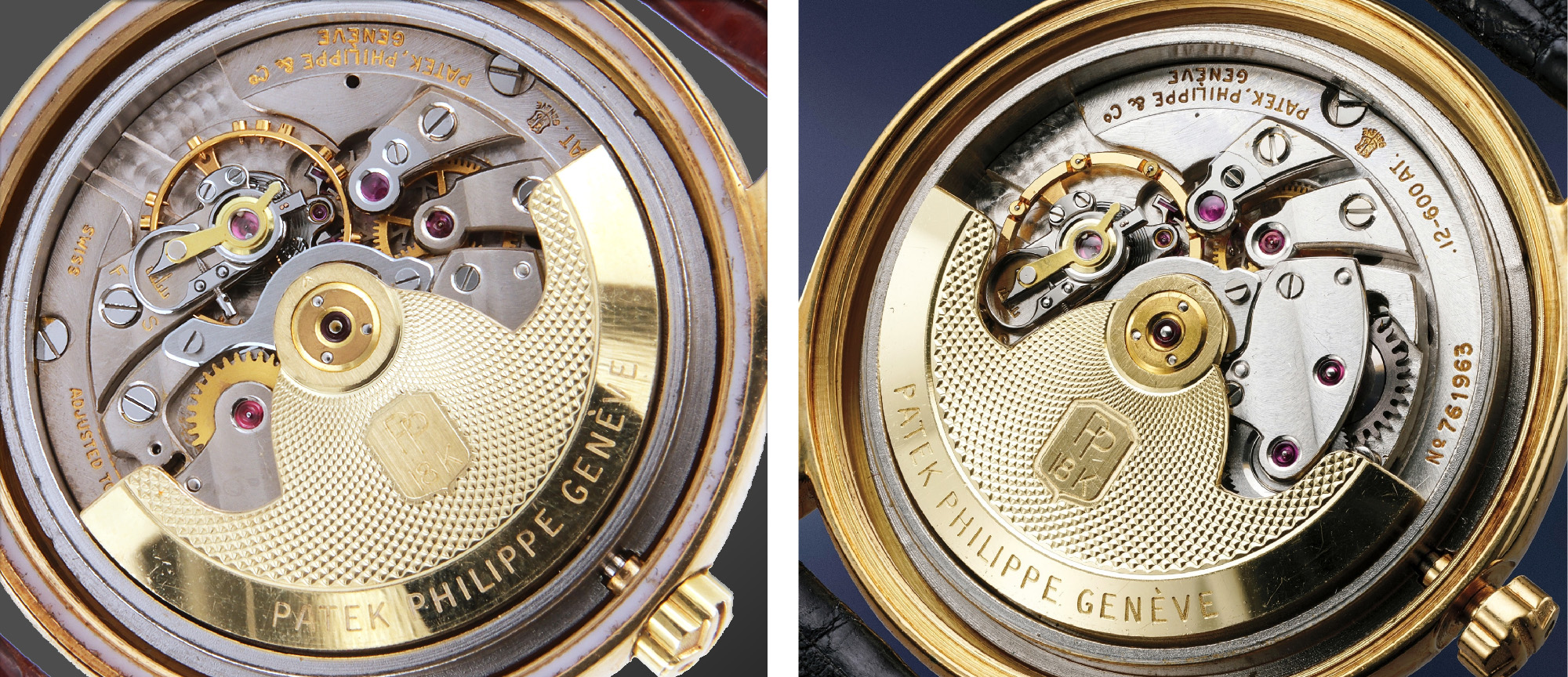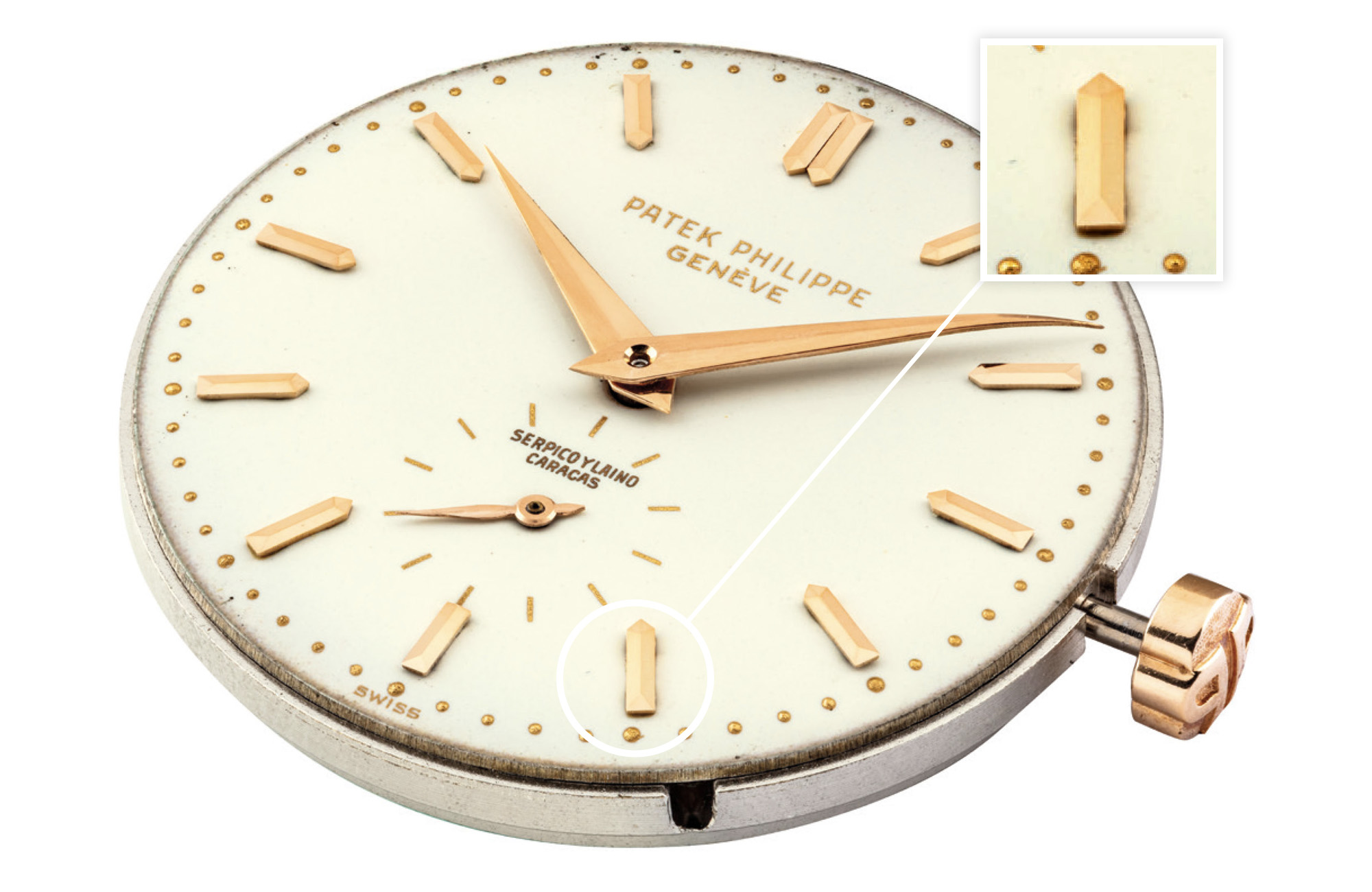FOCUS ON. Patek Philippe 2526, the history and innovations of an out-of-the-ordinary reference.
the first automatic patek and the exemplar belonged to enrico mattei for sale by bolaffi auction
▣ September 13, 2020 by ENRICO AURILI
Share:
Not only the first for a various innovations of the Geneva manufacture, the Patek Philippe reference 2526 is also characterized by being one of the most coveted specimens by those who are looking for the quality and refinement of the enamel dials.
Like the same pocket watches made between the mid-1700s and the next century, for the launch of its first automatic watch, Patek Philippe opted for a return to origin with the creation of a refined movement embellished with an enamel dial.
Bolaffi Auctions, Auction No. 261, lot 136 – Patek Philippe 2526 belonged to Enrico Mattei
The 1950s, as well as coinciding with the post-war economic boom, represented for Patek Philippe a series of innovations.
The first can be traced back to 26 March 1947, with the patent application 261.431 defining a new type of balance wheel. Known at first as balancier à vis and later Gyromax, this new organ consisted of eight adjustable weights recessed along the upper periphery of the balance which replaced the traditional compensated screws. In this way, for Patek, it was possible to create a bigger balance with a greater moment of inertia. Effect that resulted in better watch accuracy.
Patek Philippe patent schemes: left CH261431A and right CH280067
The second innovation came almost thirty years after the production of the first automatic watches (see Leroy & Cie in 1922 and Harwood in 1926). This was due in part to the never-ending success of Patek manual watches, as well as the uncontested dominance of Rolex with its central rotor developed by Emile Borer. Launched in 1933, the Perpetual Rotor of the crowned house was the milestone that eclipsed every other automatic system patented at the time. Thanks to the decades-long patent, no other manufacturer was able to adopt this system, resulting in the adaptation of the various manufactures to the bumper system designed by John Harwood.
The new Patek Philippe caliber, expressly commissioned by general manager Jean Pfister, was designed by the team led by Francois Cart. To make up for the ownership of the patent owned by Rolex, as well as to differ from any other automatic, Cart opted for a central mass that interacted with an eccentric connected to two pawls that had the task of accompanying in the revolution the ratchet wheel communicating with the gears of the barrel.
The 289.758 patent from which the 12-600AT caliber would be born was finally filed on April 20, 1951.
Patek Philippe PATENT Scheme CH289758A
The excellence of the caliber 12-600AT
The new 12-600AT caliber was produced in series starting from 1952 and since its birth is distinguished, as well as for the well-known attention to detail, for the engine turned oscillating mass made of 18K gold (due both to the preciousness of the metal and to its specific weight). A sophistication not even sought by Rolex, which of the automatic had made one of its greatest achievements.
Another detail was the number of jewels that in 12-600AT corresponded to 30 (28 rubies and 2 sapphires). To make a comparison, a Patek Philippe movement of the time as well as the Rolex A-296 automatic caliber had a total of 18 jewels, while the latest Patek automatic, the 324, has “only” 29.
The 12-600AT escapement worked at a frequency of 19,800 oscillations per hour and was adjusted for heat, cold, isochronism and five positions. In addition to this, the movement was equipped with a swan-neck micrometer regulator and a Parechoc anti-shock system. Although the Gyromax balance was introduced in 1953, the first 12-600AT caliber could still be equipped with a traditional screw balance. Particularity found in several exemplars of 2526 produced before 1954.
Comparison of a 12-600AT movement with traditional balance wheel (Bolaffi Auctions, ref. 2526 of 1953) and Gyromax balance (Phillips, ref. 2526 of 1955)
As described in the presentation brochure that illustrated the extraordinary features of the caliber and the new Gyromax balance, thanks to the aerodynamic properties and the possibilities of adjusting it, Patek ensured a maximum variation of only one second in 24 hours. To make a comparison, modern watches are guaranteed for variations of two seconds or less per day.
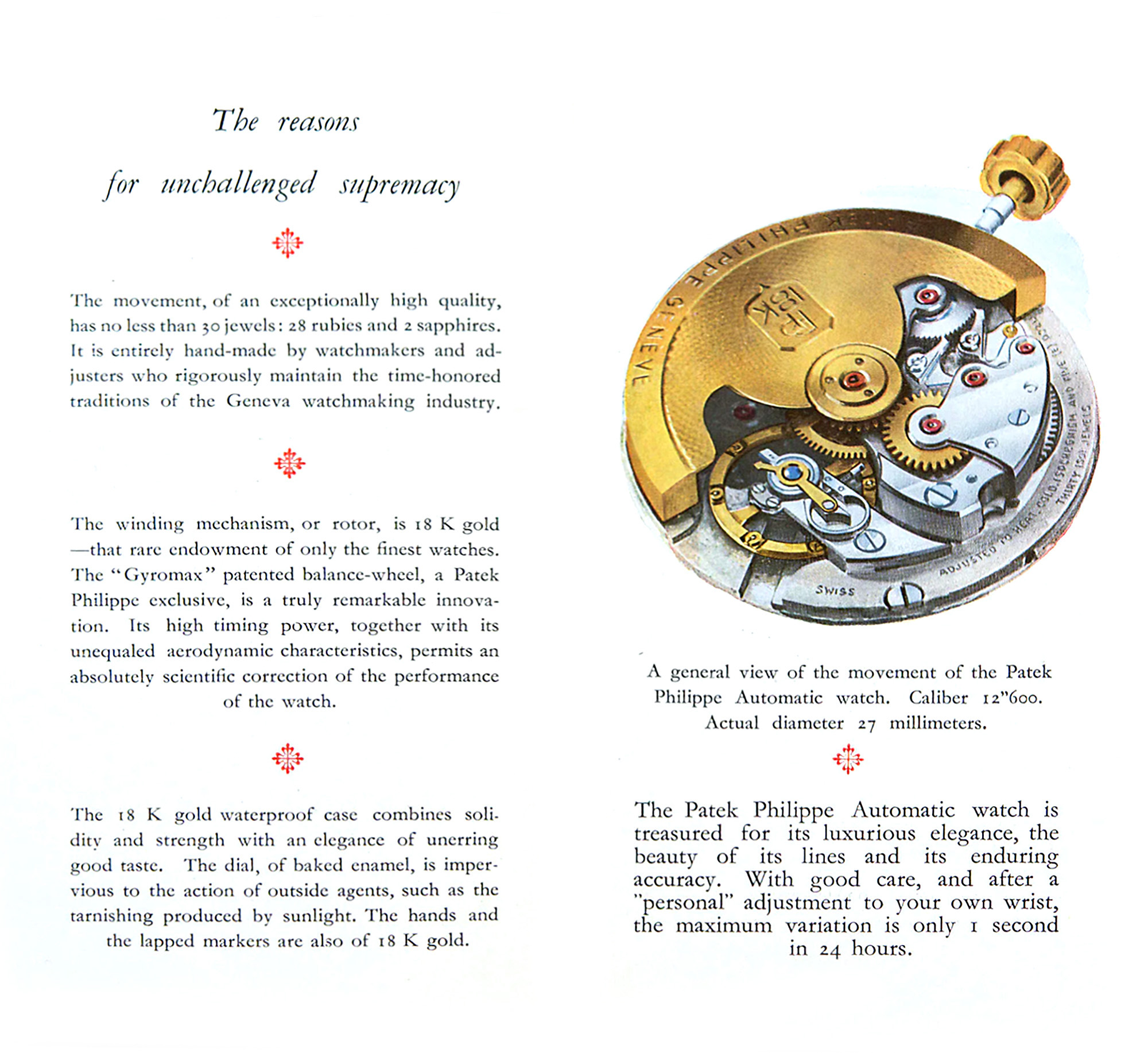
Illustration brochure of the caliber 12-600AT
According to the book Patek Philippe, The Authorized Biography by Nicholas Foulkes, the caliber 12-600AT was initially mounted on references 2526 (1952), 2540 (1953), 2551 and 2552 (1954), and then equipped in the following years by three more different references.
The arrival of the new 2526
Based on the drawings of David Penney, who in 1931 outlined the shapes of the first Calatrava reference 96, the new 2526 model abandoned the rigid lines of its predecessors in favor of softer shapes and a case of 36 mm of diameter (an illustration by Penney depicting the 2526 with Breguet indexes is present in the book Patek Philippe, Montre Bracalets by Huber & Banbery).
Reference 2526 was produced with yellow and pink gold cases, and in an even smaller number in white gold and platinum. As already introduced with reference 438 (1935), whose realization was commissioned by Taubert & Fils that in 1931 patented the waterproof cases with a decagonal caseback, the Genevan manufacturer also adopted for its first automatic model a waterproof screw back. This time the manufacture for 2526 was entrusted to Frédéric Baumgartner, who already in the late 1930s also distinguished himself for some patents that would later characterize the Omega Marine Standard.
For those interested, Patek Philippe offered the chance to combine the watch with a refined set of bracelets. Also made of precious metal, the bracelets were produced by illustrious brand such as Gay Frères and Ponti Gennari.
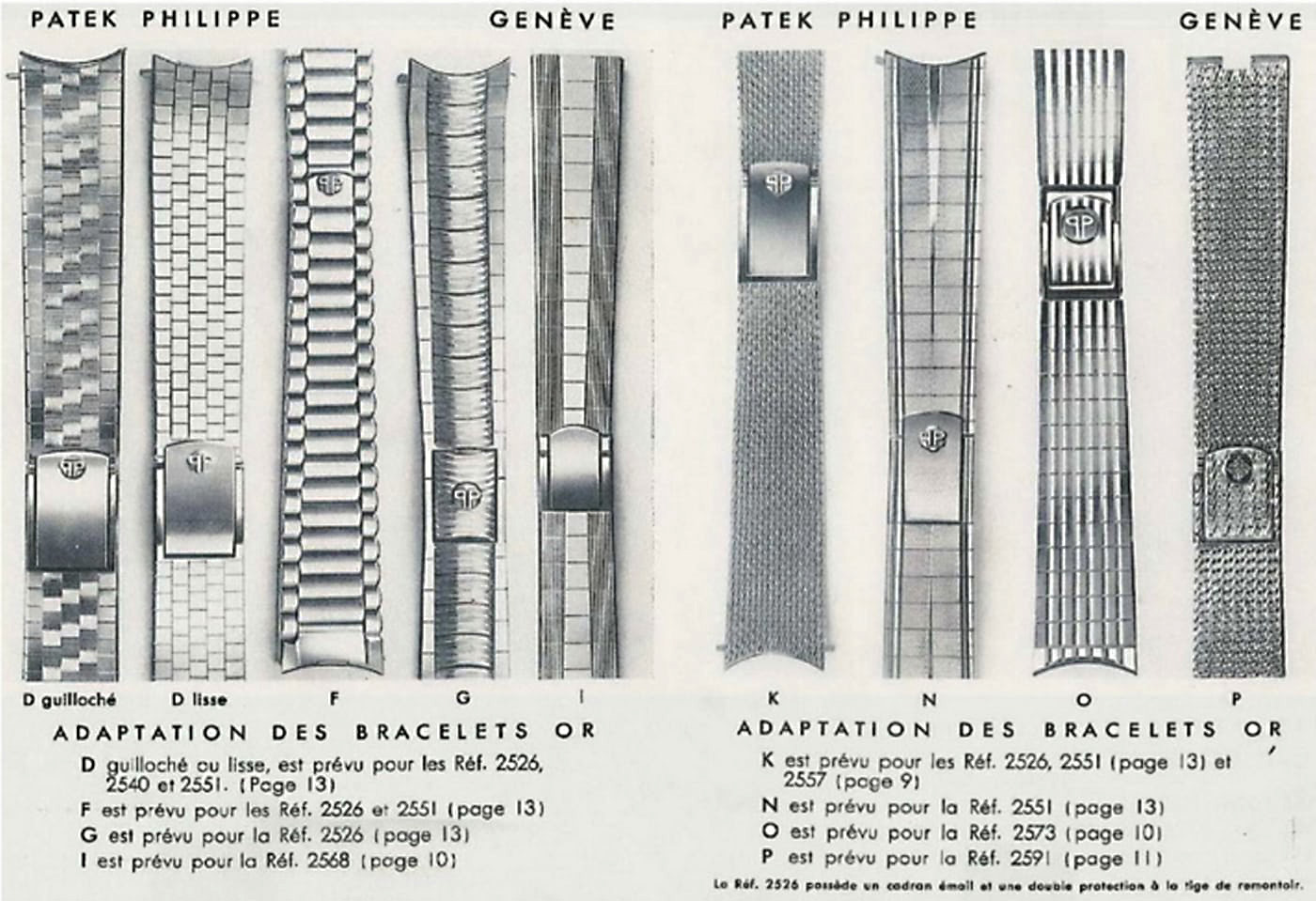
Catalog image of bracelets that could be adapted with the various models, including the 2526
The extraordinary of the enamel dial
In the past, Patek Philippe had already distinguished itself by the use of enamel in the creation of dials with which to highlight its own watches, such as the cloisonné (see this reference 2481). To crown the launch of its first automatic watch, Patek opted to make on a silver base a double-baked enamel dial.
The color chosen was a white but with cream tones. A color that as noted by Hodinkee in his 2016 article not even Donzé Cadrans, which for some collectors tried to replicate the enamel dial of 2526, despite its historical skill and modern techniques failed to achieve.
While still today the construction of enamel dials can lead to failures, at the time the realization of these dials in double-baked enamel (combined with the need to pierce the delicate surface to apply the indexes) led to a ratio of about 9 pieces out of 10 to be discarded.
To overcome the difficulty in the realization, Patek later decided that the indexes would simply be glued. This involved the classification of these dials in the First Series (i.e. with applied indexes) and the Second Series (glued indexes), with collectors craving in particular the first type of dials recognizable for the convexity on the enamel produced during the drilling and notable under the indexes.
Detail, in particular of the hollows, of the first series dial of 2526 sold by Christie’s in 2019
The 2526 remained in production until 1960 circa, the year of the release of the new 27-460 automatic caliber. During this time, a final type of dials made of metal (called Third Series) was produced.
The indexes used in the three types of dials were mostly the bâtons ones with some variations that saw the application of Breguet numbering. Some metal dials were also embellished with diamond indexes.
The dials called Golden Rule (which it’s an ethical and moral code found in different philosophies of thought as well religions) are unique due the inscription Do Unto Others As You Would Have Them Do Unto You. This type of dial is found in combination with the signature of the prestigious Tiffany jewelry store. It is assumed that this series of dials may have been produced at the request of US President Lydon Baines Johnson, whose exemplar of 2526 in yellow gold is kept today at the LBJ Library and Museum in Austin, Texas.

Comparison of versions with Breguet indexes, Golden rule writing and diamonds set
For those looking for an even more special dial can only be the black enamel version, like this sold by Phillips in 2016.
You should be careful, however, that the Patek extract confirms the birth of the watch with this type of dial. In 2015 Christie’s sold a 2526 from the 1957 with a black enamel dial replaced, apparently by the owner’s request, few years after the purchase of the watch. Compared to Phillips’ result of CHF 185,000, Christie’s sold its at CHF 81,250. An important, even if understandable, difference.
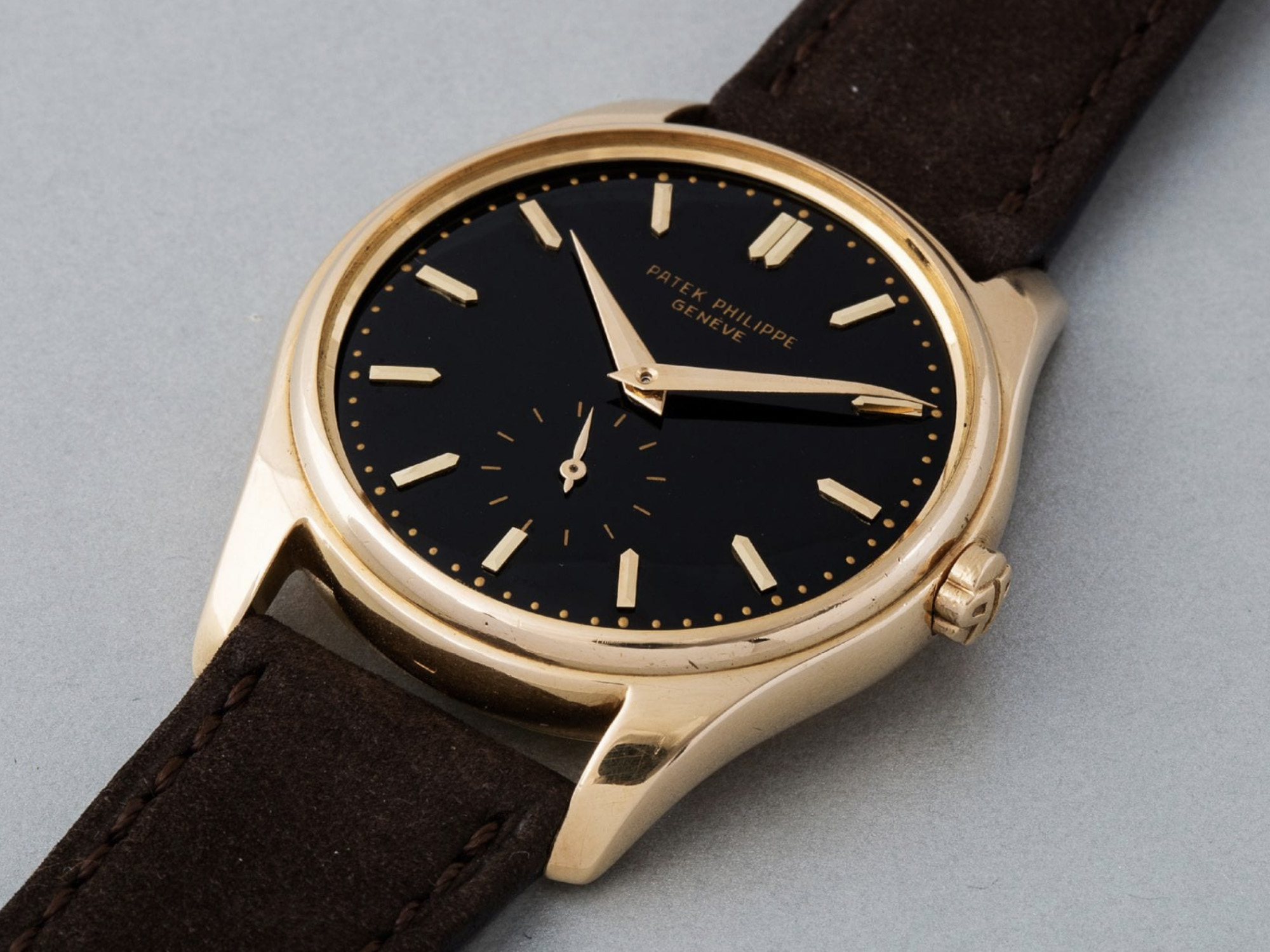
The 2526 black enamel dial sold by Phillips in 2016 for CHF 185,000
“The Patek Philippe Automatic watch is treasured for its luxurious elegance, the beauty of its lines and its enduring accuracy.”
(text excerpt from the Patek Philippe brochure)
The watch that belonged to Enrico Mattei in auction by Bolaffi
It is with great pleasure that beyond the extraordinariness of this reference, the first self-winding Patek watch which also dared with the realization of an extraordinary enamel dial, the next Bolaffi auction which will be held this September 30th in Milan has the honor of having in the catalogue the Patek Philippe 2526 belonged to Enrico Mattei. One of the most influential and charismatic figures of the post-war period.
The watch bearing an engraved inscription on the caseback was a gift given to him by AGIP executives and graduates. The same company that Mattei was able to rebuild and expand.
The reference 2526 proposed in the auction is distinguished by being one of the very first exemplars, as confirmed by the Patek extract that indicates the year of production in 1953 and the serial number of the movement 760.217 (Patek began the numbering of 12-600AT caliber from 760.000 to end it with 767.099). Being one of the first examples of 2526, the dial that adorns the watch is a First Series whose value is even more embellished by the customization for Gobbi, historic watchmaking in Milan founded in 1842.
Another peculiarity and congruence of this 2526 is the sale date that the extract confirms to be January 13, 1954, with the date engraved on the caseback that is in memory of February 4 of that same year. The year after some historical implications of Enrico Mattei, with the foundation of ENI and the establishment of AGIP Mineraria in 1953.
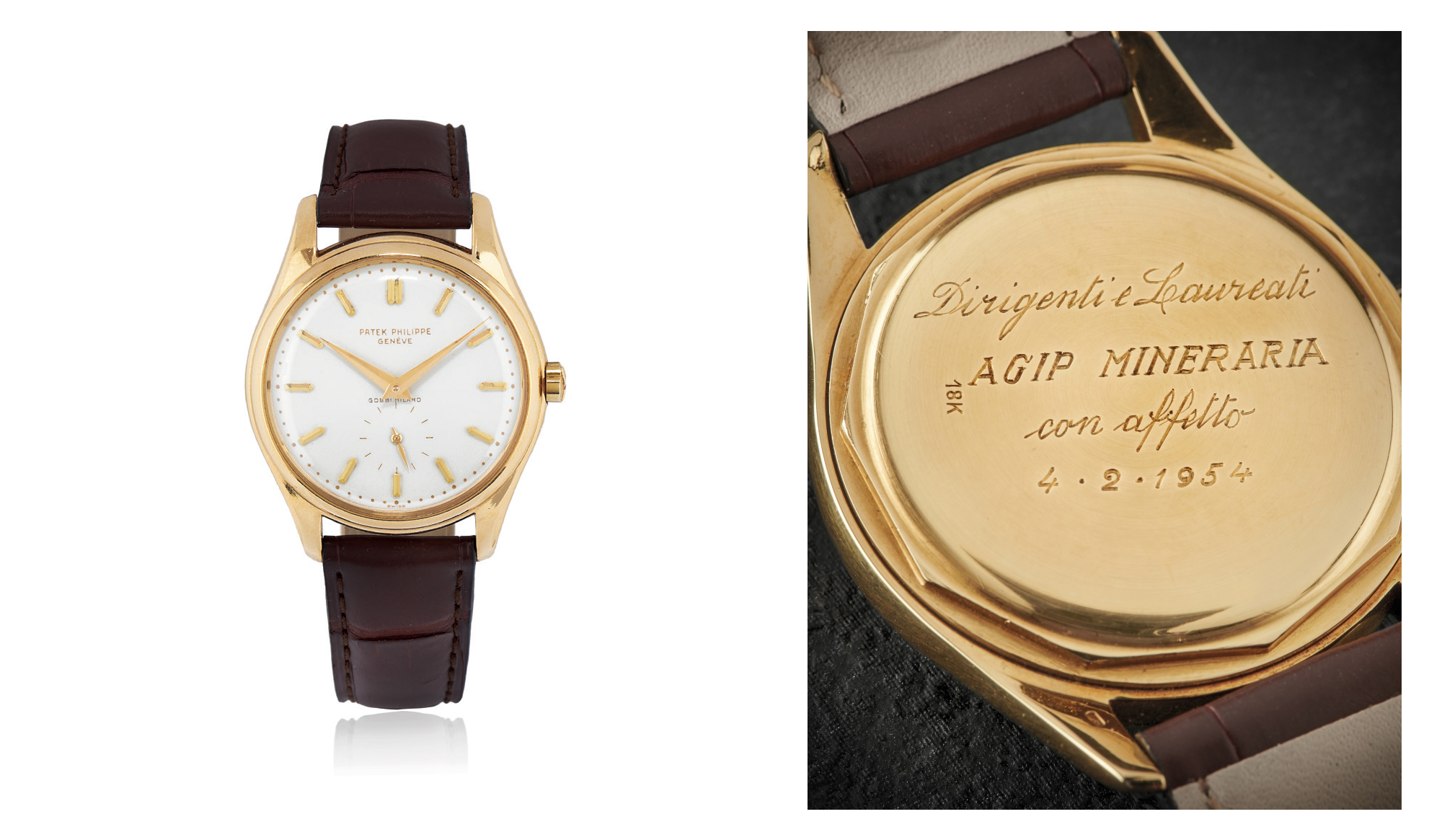
The 2526 on sale by Bolaffi on September 30. Auction base estimate EUR 25,000
Altri/ARTICOLI

